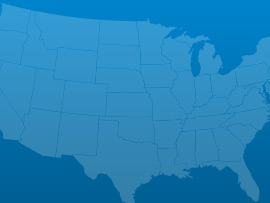In the six years since Hurricane Katrina struck Louisiana, no
component of the state’s infrastructure has been more scrutinized than its levee
system, which experienced a massive failure in the New Orleans area in 2005.
Billions of dollars have been spent to rebuild the levee system in the greater
New Orleans area to new standards, but some issues remain. The design level
of protection for the levees, as authorized by Congress, is based on the 100 year
storm event. Our report card grade for the levees is based on that standard. If
a higher level of protection, such as a 500 year or 1000 year storm event, had
been used for grading the levees, a lower grade would have resulted as significant
“residual risks” remain for storms that exceed the current “100 year” level of
protection in this important urban area with National Significance. In addition,
local funds are not available and the Federal Government has not dedicated any
resources to maintain the new system, which will deteriorate over time if not
regularly monitored and maintained. And, many vulnerable, important areas
in south Louisiana are not part of the new system and have poorly engineered
systems that will not hold up to a tropical storm, much less a Category 3
hurricane. The successful performance of the vast riverine flood protection system
in our state during the historic Mississippi River flood of 2011 helps to
support the overall grade received by our levee systems.
 Aviation
Aviation Bridges
Bridges Dams
Dams Drinking Water
Drinking Water Levees
Levees Roads
Roads Solid Waste
Solid Waste Wastewater
WastewaterA: Exceptional, B: Good, C: Mediocre, D: Poor, F: Failing, ?: Incomplete
Each category was evaluated on the basis of capacity, condition, funding, future need, operation and maintenance, public safety, resilience, and innovation
Aviation
56 public-use airports
Bridges
1,827 of the 13,050 bridges are structurally deficient
Bridges
$171.70 million in bridge funds came from the Federal Highway Bridge Fund in 2011
Dams
45 high hazard dams
Dams
100% of the state regulated dams have an Emergency Action Plan
Drinking Water
$5.3 billion in drinking water infrastructure needs over the next 20 years
Energy
3.577 gigawatt-hours of renewable energy every year, ranking it 30th
Hazardous Waste
9 sites on the National Priorities List
Inland Waterways
2,820 miles of inland waterways, ranking it 2nd nationally
Levees
3,122 miles of levees
Ports
510.8 million short tons of cargo in 2012, ranking it 1st nationally
Public Parks
$207.0 million of unmet needs for its parks system
Rail
17 freight railroads covering 2,858 miles across the state, ranking 24th nationally by mileage
Roads
$1.3 billion a year in costs to motorists from driving on roads in need of repair, which is $464 /yr per motorist
Roads
6,559 of the state’s 61,326 public roads are major roads, and 19% are in poor condition
Schools
$7.3 billion in estimated school infrastructure funding needs
Transit
30.2 million annual unlinked passenger trips via transit systems including bus, transit, and commuter trains
Wastewater
$4.0 billion in wastewater infrastructure needs over the next 20 years

March 03, 2017
As the President’s repeated in his address to Congress his pledge to dramatically increase infrastructure spending to the tune of $1 trillion, various Congressional Committees

March 01, 2017
On Tuesday night, President Trump addressed a joint-session of Congress for the first time in his presidency. Infrastructure was among the many issues he discussed.

February 28, 2017
U.S. motorists set a new record for vehicle miles travelled (VMT) in 2016, driving over 3.2 trillion miles, an increase of 70 billion miles from

February 17, 2017
Romantic dates, the Grammy awards and celebrating black history are not the only milestones of this week; the Oroville dam crisis in California and the